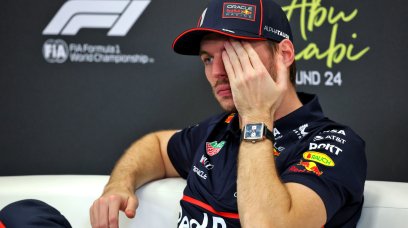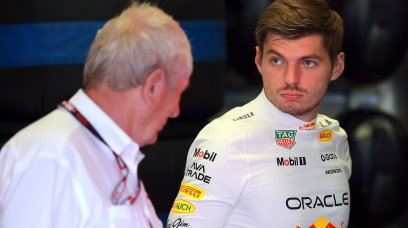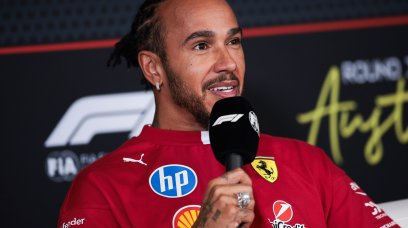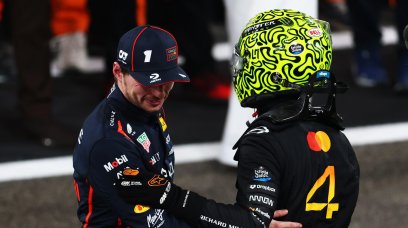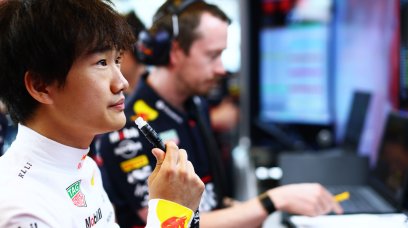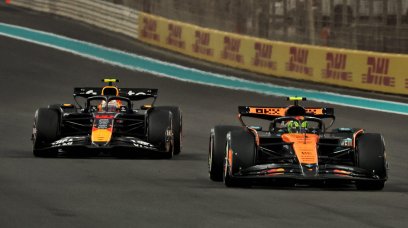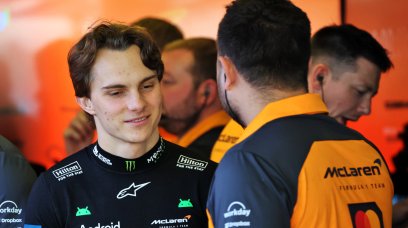There were well over one hundred instances of drivers exceeding track limits reviewed by Race Control during the Austrian Grand Prix. It was probably the busiest it has ever been, as the Grand Prix watchman policed whether drivers had left the track as defined by the white lines at the edge of the circuit. Seven drivers were investigated and penalised for "leaving the track multiple times" including Lewis Hamilton, Carlos Sainz, and Yuki Tsunoda twice. Several others also had lap times deleted during the race, with some being issued the fabled 'black and white' driving standards flag after three deletions. F1 has a tricky relationship with track limits, with various solutions having been implemented over the years. After numerous incidents during the 2021 season, track limits have been defined as the white lines which run around the circuit which drivers must not put all four wheels over. Even though the 'white lines' rule enables consistency at each circuit, it is easier to police at some circuits than others. The Red Bull Ring is an outlier and puts this particular regulation into overdrive due to the undulating nature of the circuit, where drivers can often run wide at Turns 1, 9, and 10 without realising. A staggering 47 laps were deleted during qualifying, but it has since emerged that 83 laps were deleted in this year's race - nearly double the 43 that were omitted in 2022.
FIA addresses efficiency
The efficiency of lap time deletions has been sped up this year with the inclusion of FIA Remote Operations in Geneva, which acts as a Video Assistant Referee in addition to Race Control. FIA officials have access to more camera angles and additional data to determine whether an infringement has taken place. It was introduced as a response to delays last season, but with multiple infringements during the race, it appears they are still playing catch up. Lando Norris had four lap times deleted, but he was not issued with a black and white flag after three as per the procedure, or with any subsequent time penalty. It took five lap time deletions before Hamilton was issued with a driving standards flag. Nico Hulkenberg was also collared for track limits, even though he was out of his car and parked at Turn 3 having retired from the race. It's clear the solution works well in qualifying as it created jeopardy and forced drivers to complete lap times within the boundaries. But with other factors at play in the race such as fuel loads, tyre degradation and aero balance changes, it seemed overkill to strictly police track limits to the letter. Christian Horner remarked that it made F1 look "amateurish" while drivers including Hamilton and Sainz were left baffled by the whole situation.
Race result confirmed hours after chequered flag
Post-race, a protest was lodged by Aston Martin and upheld regarding the lack of penalties issued to drivers who clearly did exceed the limits on more than three occasions. The stewards admitted in their decision document that several drivers had escaped being penalised upon further review, with 12 penalties being issued four hours after the chequered flag. RacingNews365.com understands that influx of reports led to an "unprecedented situation" whereby the FIA was left unable to review all potential track limits infringements. An FIA spokesperson explained: "During the Grand Prix, Race Control was tasked with reviewing well over 1,200 instances where a car was reported as potentially leaving the track. "The results will be updated once the review of those which were not able to be reviewed during the race is complete. "We note that while this is not a straightforward solution in relation to other series that race here, it has proved to be very effective at other corners and circuits with similar issues." The stewards have recommended that a gravel trap be installed at the exit of Turns 9 and 10 to further deter drivers and prevent such instances of multiple infringements happening again. This modification has been pushed back on safety grounds by the Red Bull Ring due to it also playing host to a MotoGP round.
Opinion: F1 needs flexibility and to make use of technology
The F1 soap opera commissioned its latest episode following the Austrian Grand Prix, when yet again we were left waiting for a final stewards' decision hours after the chequered flag fell. It was a bizarre scenario seeing so many lap times being deleted from the timing screen and drivers snitching on each other for going over the white lines. But somewhere amid the madness is a desire to make the competition as fair as possible and not abuse the track design. Drivers should stick to the limits, but when that is not possible because of circumstances, is it right to force them to slow down? Lewis Hamilton was heard over team radio saying he was struggling to control his car, while other drivers have previously noted how difficult it is to stick to track limits as the race goes on and tyre degradation becomes a factor. It's clear this rule worked well for qualifying and should be applied because the drivers are being measured over a single lap. But a leeway of more than three laps should be applied in the race to account for the evolution of conditions and natural flow of the racing. The FIA has done well to catch up after the farce involving Sergio Perez last year, when the Mexican was stripped of his Q3 laps because of an infringement in Q2. But perhaps they should look to adopt an automated system similar to what is used at several MSV circuits in the UK at certain corners. The stewards' recommendation of installing gravel might seem sensible, but it was the FIA who wanted to rid circuits of this in favour of tarmac on safety grounds. Their workaround was sausage kerbs, but they have proved to cause more problems - and injuries - than they have solved. Track limits will continue to be a debate and there is no one-size-fits-all answer, but this black and white approach is having some unintended consequences.
Most read
